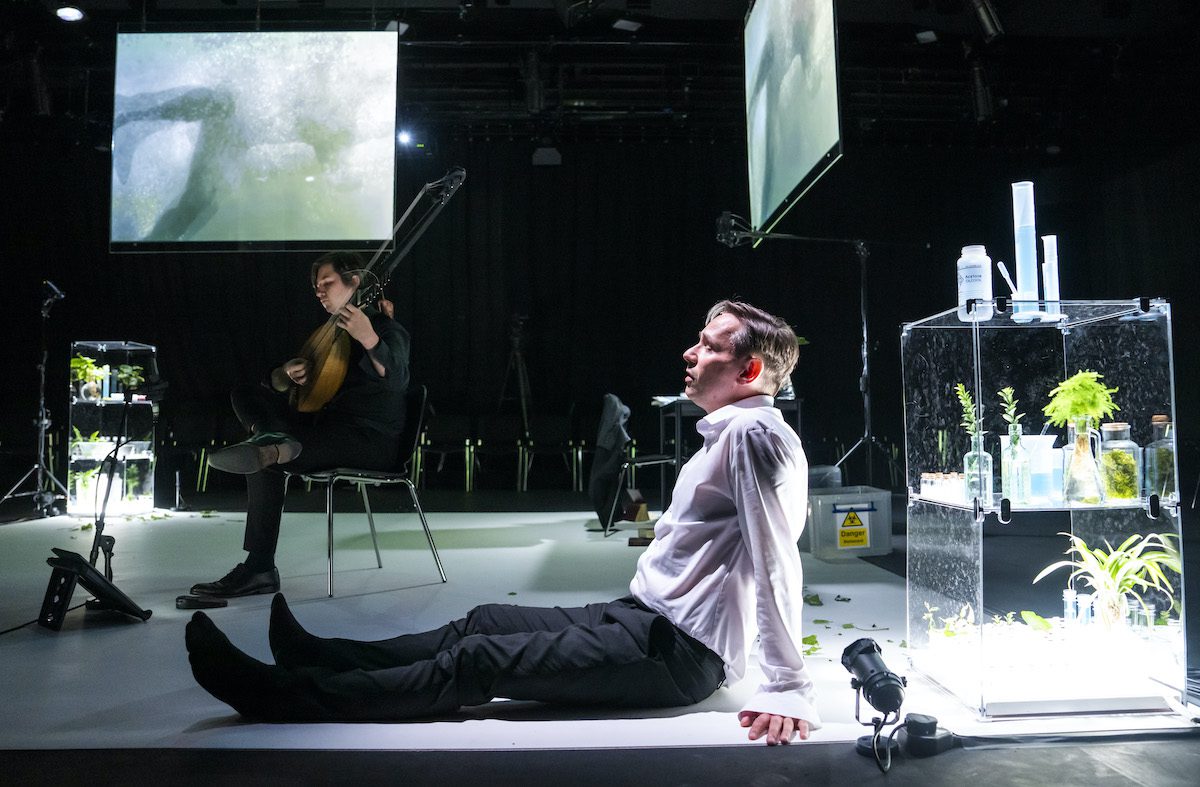In 2014 countertenor Iestyn Davies and lutenist Thomas Dunford recorded a CD devoted to the songs and lute works of John Dowland. Director Netia Jones has devised a dramatic showcase for this material and located it in the Barbican’s Pit Theatre, here reconfigured in the round.
Dowland is one of those composers whom we think we know, but whose output contains more variety than we might suppose. He is conventionally thought of as a Renaissance composer completely sunk in gloomy melancholy – even he wryly bought into that notion with a song titled ‘Semper dolens, semper Dowland’, which might translate as ‘Same old dirge, same old Dowland.’ However, as this evening indicates, there are many shades of meaning to melancholy, from defiance to wistful acceptance to self-indulgent enjoyment, and his music, and these performers more than have the measure of them.
The design concept is clear, clean and simple. Dunford and Davies are placed within a white linoleum square which also contains a desk and chair, with the corners marked by four cabinets each containing vials, bottles and plants of the kind you might expect in a scientific laboratory, an updated cabinet of curiosities to be explored. Above hang Perspex panels on which video episodes are projected sometimes by live camera. The songs of Dowland are interrupted or bracketed with recordings by three readers of texts from Freud and a modern psychoanalyst, Darian Leader, and – above all – from Robert Burton’s ‘An Anatomy of Melancholy’, the seventeenth-century work that gives the show its name.
We begin in full darkness from which Davies’s voice emerges for ‘In Darkness let me dwell’, and an hour later we go back to black for a repeat of the same song. In between we go on a remarkable journey through the comfort and fear of the night, through close embrace of despair to resilience and resistance of the same. There are explorations of the resemblance of melancholy to mourning – of how in grief we bring the dead to life and how in complete melancholy we in effect die with them. We confront the depression brought about by despised or thwarted or lost love, and the peace and loneliness of different qualities of isolation.
On the face of it this sounds like grim fare for an evening out, but this is not so. Not at all. Instead the skill and delicacy of the performers and the inventiveness of the supporting staging ensures that we are each of us taken to a still place of meditation within ourselves, where the musical framework allows us to explore the deepest issues free from the distractions of the world and of others. I have rarely occupied a theatre seat in a space of such concentrated, suspended stillness.
Davies is a fine and plausible actor as well as a refined singer, which makes him an ideal conduit for these songs, at once lending them a personal intensity but also an abstraction which focuses the listener on specific shades of emotion. He is matched by Dunford’s exquisite lute playing which runs in continuous commentary through songs and solo items for the length of the performance. You can understand why some have called him the Eric Clapton of lute players. He transforms the sense of what this delicate instrument can do: intricate filigree lines woven around the melody of the voice, fierce percussive protests, and lyrical, insinuating introductions and postludes that set the mood for each piece or transition elegantly through to the next. His performance evoked a contemporary description of Dowland himself, ‘whose heavenly touch upon the lute doth ravish human sense.’
This production is an exemplary case study in how music apparently remote from our age can be made of confronting and central relevance to issues both fleeting and final that all of us must face. Performances run twice a day through the coming weekend, and it is an experience both thrilling and deeply inward that is not to be missed.

